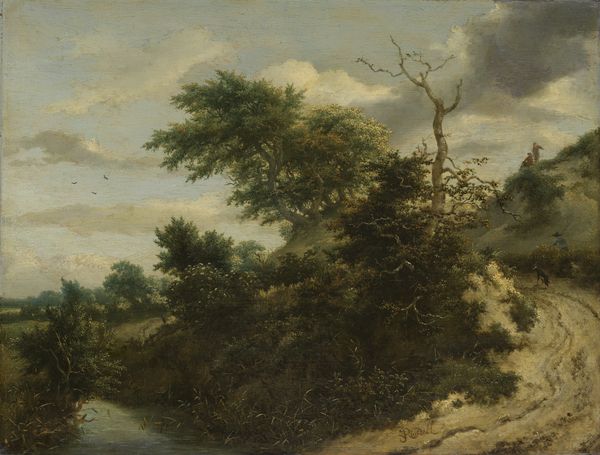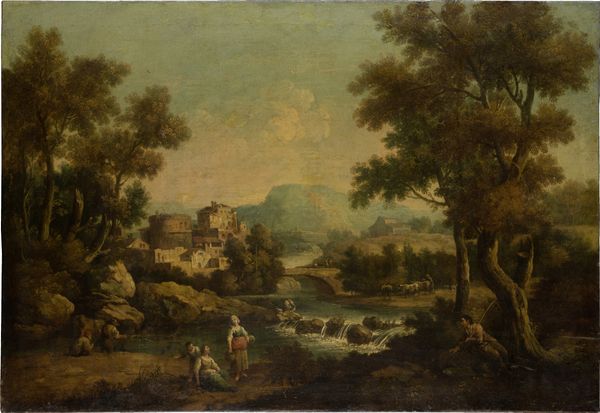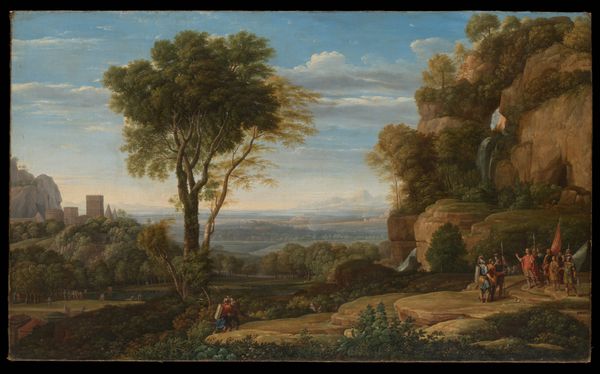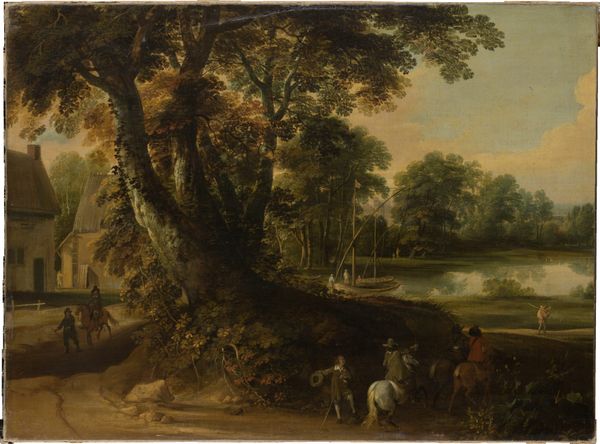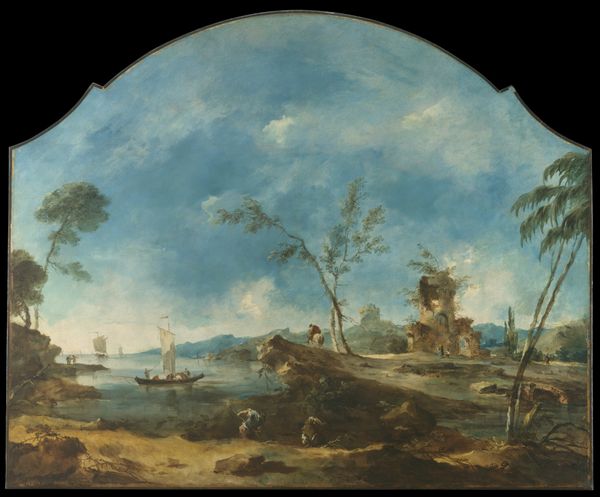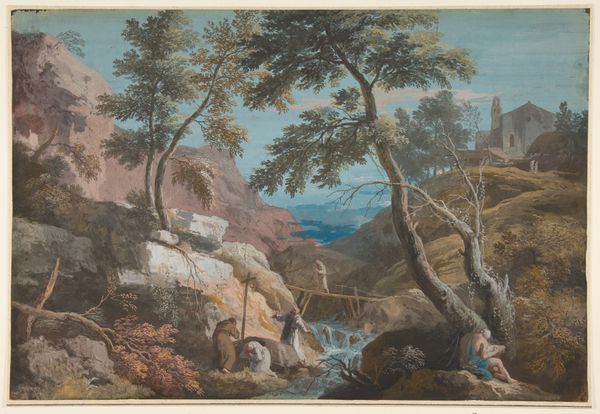
painting, oil-paint
#
baroque
#
painting
#
oil-paint
#
landscape
#
oil painting
#
genre-painting
Dimensions: support height 42.8 cm, support width 57.8 cm, outer size height 61 cm, outer size width 75 cm, outer size depth 5 cm
Copyright: Rijks Museum: Open Domain
Curator: Here at the Rijksmuseum, we find Gillis Peeters' 1633 oil painting, "Watermill by a Wooded Outcrop." Editor: Immediately, I’m drawn into this peaceful scene; the gentle waterfall, the quaint mill… it has a kind of unassuming, idyllic charm. It whispers of simpler times. Curator: Yes, the charm stems significantly from its balanced composition. Observe how the mill and waterfall form a strong vertical axis, counterbalanced by the gentle slope and figures moving towards the right, guiding our eye across the canvas. Editor: It’s a delicate dance, isn't it? This axis versus the gentle slope, and how he softens every line. Nothing is stark, it's more felt than observed. It almost looks like memory painting rather than directly "en plein air." The human presence gives a certain comfort, but in terms of tonality, look at the consistency and how nothing escapes into sharpness, a kind of quiet and internal feel of nature, perhaps. Curator: The tonal unity is a key characteristic of the baroque landscape, aligning with contemporary aesthetic doctrines that promoted visual harmony above dramatic contrast. We observe a consistent use of brown, greens and subdued shades across the depiction, unifying visual impact. It mirrors the classical concepts about harmony between nature and humans. Editor: Harmony it is. You're right! A harmony that I believe translates into that sense of timelessness I experienced at first glance, so what would be the story behind these people by the path in the foreground? They give a feel of ordinary routine... Curator: Absolutely. Genre scenes like these often portray the daily life of rural communities and reflect, symbolically or otherwise, prevailing social or cultural values. The scale relationships between those staffage elements give proportion and allow, or even push, for emphasis on nature itself. Editor: That’s fascinating, understanding how those intentional relationships help reveal Peeters' perspectives… a painting that is clearly far deeper than pretty pastoral eye-candy! Curator: Precisely. Its subtle but thoughtful orchestration makes it a prime example of the era's aesthetics of form and subject, one which prompts us to revisit fundamental ideas about landscape and society at the time. Editor: Yes! The form contains the period’s perspective, now, if only my landscape painting had such interesting structure; alas, it only holds the view! Curator: Indeed, it's a view worth contemplating.
Comments
No comments
Be the first to comment and join the conversation on the ultimate creative platform.
